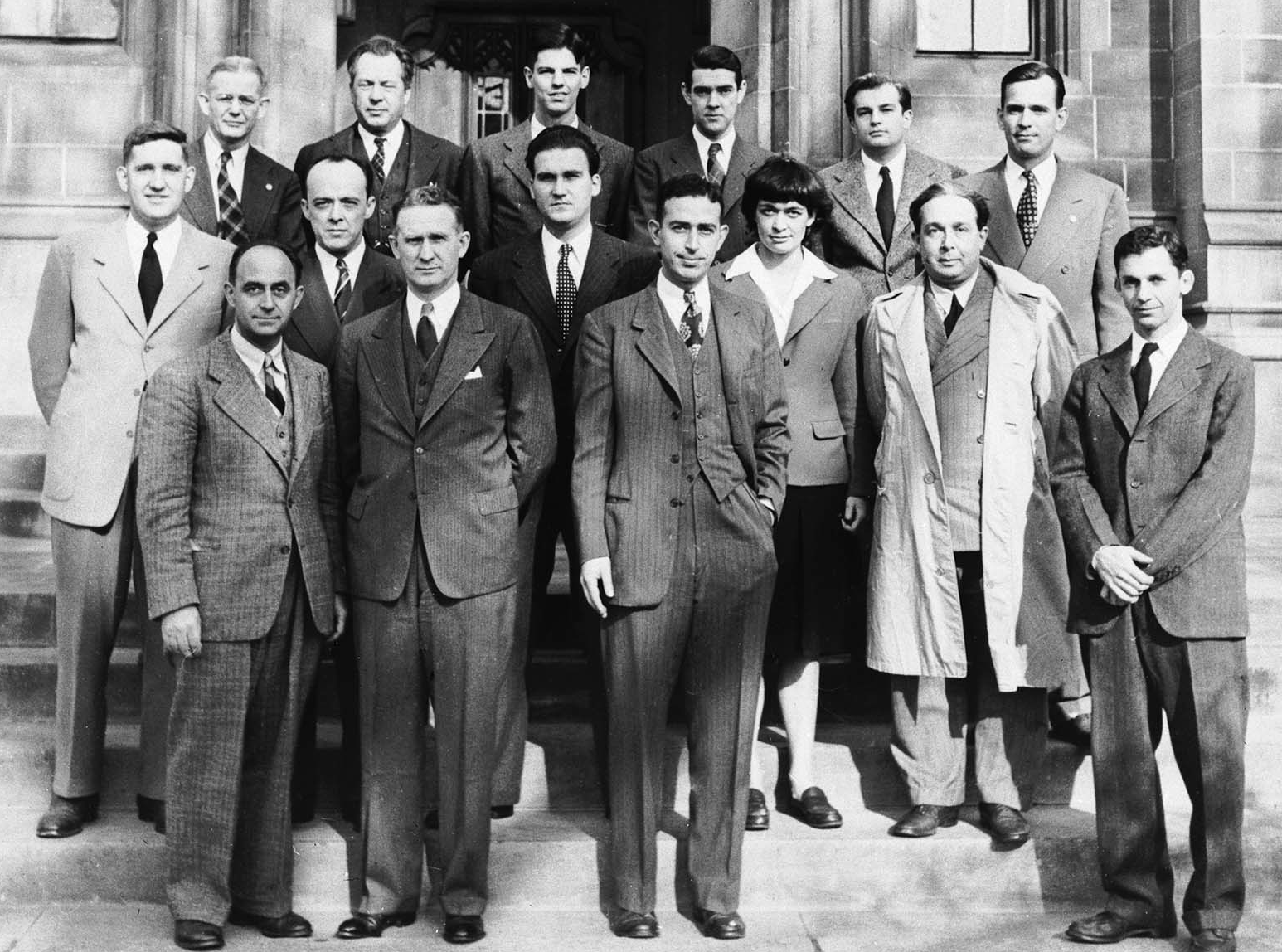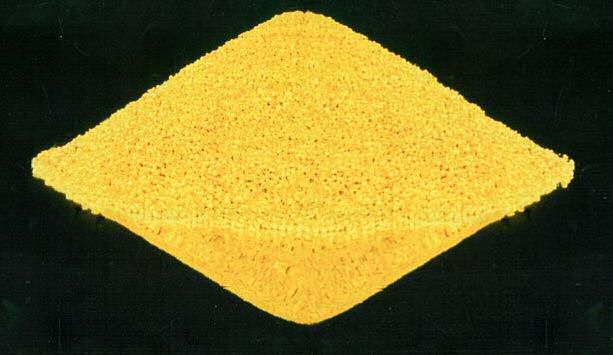|
Chicago Pile 1
Chicago Pile-1 (CP-1) was the world's first artificial nuclear reactor. On 2 December 1942, the first human-made self-sustaining nuclear chain reaction was initiated in CP-1, during an experiment led by Enrico Fermi. The secret development of the reactor was the first major technical achievement for the Manhattan Project, the Allied effort to create atomic bombs during World War II. Developed by the Metallurgical Laboratory at the University of Chicago, CP-1 was built under the west viewing stands of the original Stagg Field. Although the project's civilian and military leaders had misgivings about the possibility of a disastrous runaway reaction, they trusted Fermi's safety calculations and decided they could carry out the experiment in a densely populated area. Fermi described the reactor as "a crude pile of black bricks and wooden timbers". The reactor was assembled in November 1942, by a team that included Fermi, Leo Szilard (who had previously formulated an idea for non ... [...More Info...] [...Related Items...] OR: [Wikipedia] [Google] [Baidu] |
Chicago
(''City in a Garden''); I Will , image_map = , map_caption = Interactive Map of Chicago , coordinates = , coordinates_footnotes = , subdivision_type = Country , subdivision_name = United States , subdivision_type1 = State , subdivision_type2 = Counties , subdivision_name1 = Illinois , subdivision_name2 = Cook and DuPage , established_title = Settled , established_date = , established_title2 = Incorporated (city) , established_date2 = , founder = Jean Baptiste Point du Sable , government_type = Mayor–council , governing_body = Chicago City Council , leader_title = Mayor , leader_name = Lori Lightfoot ( D) , leader_title1 = City Clerk , leader_name1 = Anna Valencia ( D) , unit_pref = Imperial , area_footnotes = , area_tot ... [...More Info...] [...Related Items...] OR: [Wikipedia] [Google] [Baidu] |
Leona Woods
Leona Harriet Woods (August 9, 1919 – November 10, 1986), later known as Leona Woods Marshall and Leona Woods Marshall Libby, was an American physicist who helped build the first nuclear reactor and the first atomic bomb. At age 23, she was the youngest and only female member of the team which built and experimented with the world's first nuclear reactor (then called a ''pile''), Chicago Pile-1, in a project led by her mentor Enrico Fermi. In particular, Woods was instrumental in the construction and then utilization of geiger counters for analysis during experimentation. She was the only woman present when the reactor went critical. She worked with Fermi on the Manhattan Project, and she subsequently helped evaluate the cross section of xenon, which had poisoned the first Hanford production reactor when it began operation. After the war, she became a fellow at Fermi's Institute for Nuclear Studies at the University of Chicago. She later worked at the Institute for Advan ... [...More Info...] [...Related Items...] OR: [Wikipedia] [Google] [Baidu] |
Cadmium
Cadmium is a chemical element with the symbol Cd and atomic number 48. This soft, silvery-white metal is chemically similar to the two other stable metals in group 12, zinc and mercury. Like zinc, it demonstrates oxidation state +2 in most of its compounds, and like mercury, it has a lower melting point than the transition metals in groups 3 through 11. Cadmium and its congeners in group 12 are often not considered transition metals, in that they do not have partly filled ''d'' or ''f'' electron shells in the elemental or common oxidation states. The average concentration of cadmium in Earth's crust is between 0.1 and 0.5 parts per million (ppm). It was discovered in 1817 simultaneously by Stromeyer and Hermann, both in Germany, as an impurity in zinc carbonate. Cadmium occurs as a minor component in most zinc ores and is a byproduct of zinc production. Cadmium was used for a long time as a corrosion-resistant plating on steel, and cadmium compounds are used as red, orang ... [...More Info...] [...Related Items...] OR: [Wikipedia] [Google] [Baidu] |
Boron
Boron is a chemical element with the symbol B and atomic number 5. In its crystalline form it is a brittle, dark, lustrous metalloid; in its amorphous form it is a brown powder. As the lightest element of the ''boron group'' it has three valence electrons for forming covalent bonds, resulting in many compounds such as boric acid, the mineral borax, sodium borate, and the ultra-hard crystals of boron carbide and boron nitride. Boron is synthesized entirely by cosmic ray spallation and supernovae and not by stellar nucleosynthesis, so it is a low-abundance element in the Solar System and in the Crust (geology), Earth's crust. It constitutes about 0.001 percent by weight of Earth's crust. It is concentrated on Earth by the water-solubility of its more common naturally occurring compounds, the borate minerals. These are mined industrially as evaporites, such as borax and kernite. The largest known deposits are in Turkey, the largest producer of boron minerals. Elemental b ... [...More Info...] [...Related Items...] OR: [Wikipedia] [Google] [Baidu] |
German Nuclear Weapons Program
The Uranverein ( en, "Uranium Club") or Uranprojekt ( en, "Uranium Project") was the name given to the project in Germany to research nuclear technology, including nuclear weapons and nuclear reactors, during World War II. It went through several phases of work, but in the words of historian Mark Walker, it was ultimately "frozen at the laboratory level" with the "modest goal" to "build a nuclear reactor which could sustain a nuclear fission chain reaction for a significant amount of time and to achieve the complete separation of at least tiny amount of the uranium isotopes." The scholarly consensus is that it failed to achieve these goals, and that despite fears at the time, the Germans had never been close to producing nuclear weapons. The first effort started in April 1939, just months after the discovery of nuclear fission in December 1938, but ended only months later shortly ahead of the German invasion of Poland, when many notable physicists were drafted into the ''Wehrma ... [...More Info...] [...Related Items...] OR: [Wikipedia] [Google] [Baidu] |
Nazi Germany
Nazi Germany (lit. "National Socialist State"), ' (lit. "Nazi State") for short; also ' (lit. "National Socialist Germany") (officially known as the German Reich from 1933 until 1943, and the Greater German Reich from 1943 to 1945) was the German state between 1933 and 1945, when Adolf Hitler and the Nazi Party controlled the country, transforming it into a dictatorship. Under Hitler's rule, Germany quickly became a totalitarian state where nearly all aspects of life were controlled by the government. The Third Reich, meaning "Third Realm" or "Third Empire", alluded to the Nazi claim that Nazi Germany was the successor to the earlier Holy Roman Empire (800–1806) and German Empire (1871–1918). The Third Reich, which Hitler and the Nazis referred to as the Thousand-Year Reich, ended in May 1945 after just 12 years when the Allies defeated Germany, ending World War II in Europe. On 30 January 1933, Hitler was appointed chancellor of Germany, the head of gove ... [...More Info...] [...Related Items...] OR: [Wikipedia] [Google] [Baidu] |
Uranium Oxide
Uranium oxide is an oxide of the element uranium. The metal uranium forms several oxides: * Uranium dioxide or uranium(IV) oxide (UO2, the mineral uraninite or pitchblende) * Diuranium pentoxide or uranium(V) oxide (U2O5) * Uranium trioxide or uranium(VI) oxide (UO3) * Triuranium octoxide (U3O8), the most stable uranium oxide; yellowcake typically contains 70 to 90 percent triuranium octoxide) * Uranyl peroxide (UO2O2 or UO4) * Amorphous uranium(VI) oxide (''Am''-U2O7) Uranium dioxide is oxidized in contact with oxygen Oxygen is the chemical element with the symbol O and atomic number 8. It is a member of the chalcogen group in the periodic table, a highly reactive nonmetal, and an oxidizing agent that readily forms oxides with most elements as wel ... to form triuranium octoxide. :3 UO2 + O2 → U3O8; at 700 °C (970 K) Preparation 38 During World War II, "Preparation 38" was the codename for uranium oxide used by German scientists. References Oxides Ur ... [...More Info...] [...Related Items...] OR: [Wikipedia] [Google] [Baidu] |
Uranium
Uranium is a chemical element with the symbol U and atomic number 92. It is a silvery-grey metal in the actinide series of the periodic table. A uranium atom has 92 protons and 92 electrons, of which 6 are valence electrons. Uranium is weakly radioactive because all isotopes of uranium are unstable; the half-lives of its naturally occurring isotopes range between 159,200 years and 4.5 billion years. The most common isotopes in natural uranium are uranium-238 (which has 146 neutrons and accounts for over 99% of uranium on Earth) and uranium-235 (which has 143 neutrons). Uranium has the highest atomic weight of the primordially occurring elements. Its density is about 70% higher than that of lead, and slightly lower than that of gold or tungsten. It occurs naturally in low concentrations of a few parts per million in soil, rock and water, and is commercially extracted from uranium-bearing minerals such as uraninite. In nature, uranium is found as uranium-238 (99. ... [...More Info...] [...Related Items...] OR: [Wikipedia] [Google] [Baidu] |
Nuclear Graphite
Nuclear graphite is any grade of graphite, usually synthetic graphite, manufactured for use as a moderator or reflector within a nuclear reactor. Graphite is an important material for the construction of both historical and modern nuclear reactors, due to its extreme purity and ability to withstand extremely high temperature. Graphite has also recently been used in nuclear fusion reactors such as the Wendelstein 7-X. As of experiments published in 2019, graphite in elements of the stellarator's wall and a graphite island divertor have greatly improved plasma performance within the device, yielding better control over impurity and heat exhaust, and long high-density discharges. History Nuclear fission, the creation of a nuclear chain reaction in uranium, was discovered in 1939 following experiments by Otto Hahn and Fritz Strassman, and the interpretation of their results by physicists such as Lise Meitner and Otto Frisch. Shortly thereafter, word of the discovery spread thro ... [...More Info...] [...Related Items...] OR: [Wikipedia] [Google] [Baidu] |
Neutron Moderator
In nuclear engineering, a neutron moderator is a medium that reduces the speed of fast neutrons, ideally without capturing any, leaving them as thermal neutrons with only minimal (thermal) kinetic energy. These thermal neutrons are immensely more susceptible than fast neutrons to propagate a nuclear chain reaction of uranium-235 or other fissile isotope by colliding with their atomic nucleus. Water (sometimes called "light water" in this context) is the most commonly used moderator (roughly 75% of the world's reactors). Solid graphite (20% of reactors) and heavy water (5% of reactors) are the main alternatives. Beryllium has also been used in some experimental types, and hydrocarbons have been suggested as another possibility. Moderation Neutrons are normally bound into an atomic nucleus, and do not exist free for long in nature. The unbound neutron has a half-life of 10 minutes and 11 seconds. The release of neutrons from the nucleus requires exceeding the binding energy ... [...More Info...] [...Related Items...] OR: [Wikipedia] [Google] [Baidu] |
George Weil
George Leon Weil (September 18, 1907 – July 1, 1995) was an American physicist. On December 2, 1942, he removed the control rod from the Chicago Pile-1 nuclear reactor, initiating the first man-made, self-sustaining nuclear chain reaction. Early life George Leon Weil was born in New York City on September 18, 1907, the son of Leon and Elsie Rose Weil. His great-grandfather was Henry Lehman (1822–1855), founder of H. Lehman, which became Lehman Brothers. He had an older sister, Helen. He entered Harvard College, from which he graduated in 1939 and then Columbia University, where he earned his master's degree, and later his doctorate, writing his 1942 doctoral thesis on ''Beta-Ray Spectra of Arsenic, Rubidium and Krypton''. It was subsequently published in the Physical Review in September 1942. Manhattan Project At Columbia University, Weil became involved in Enrico Fermi's efforts to build a nuclear reactor. In December 1941, the Office of Scientific Research and Development ... [...More Info...] [...Related Items...] OR: [Wikipedia] [Google] [Baidu] |





